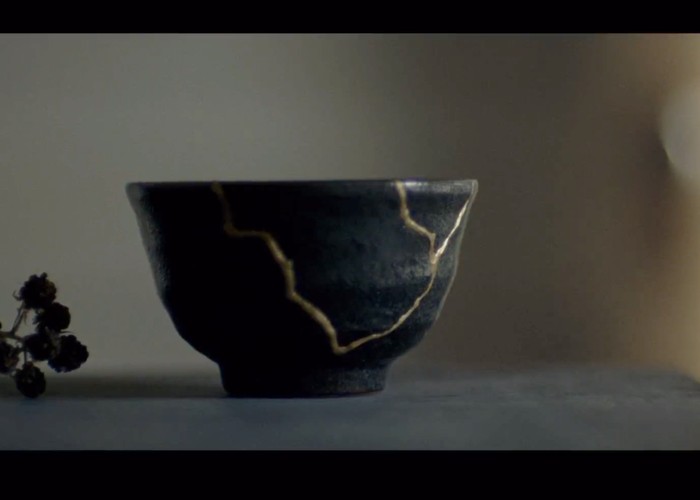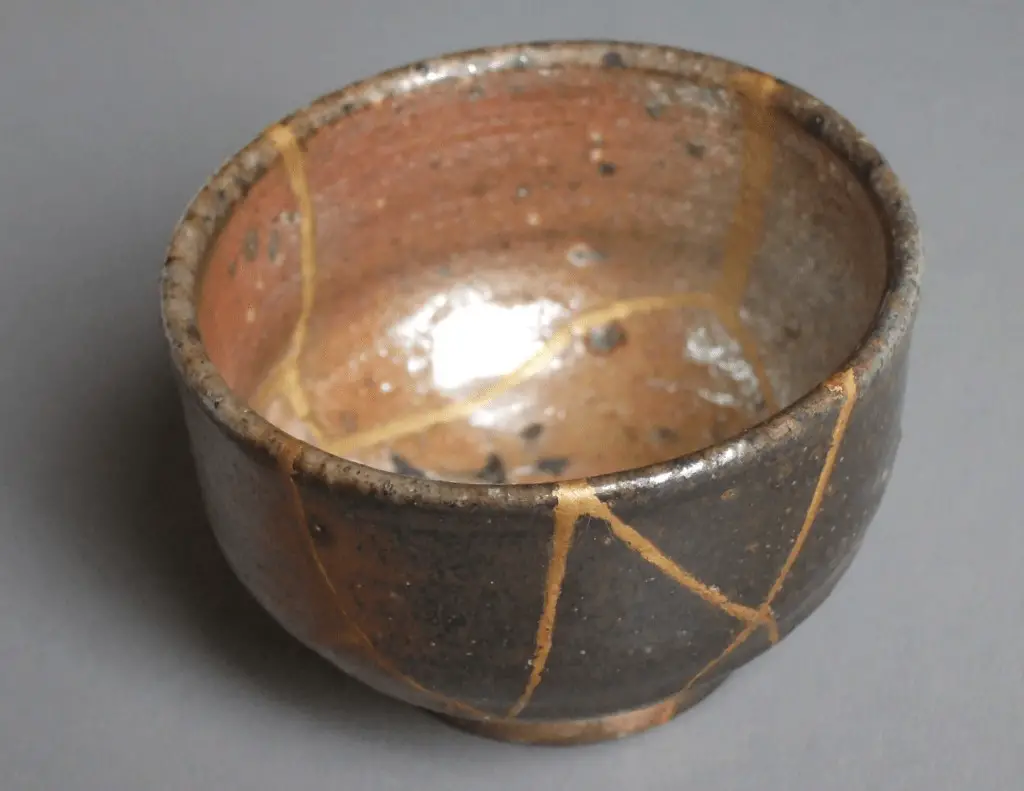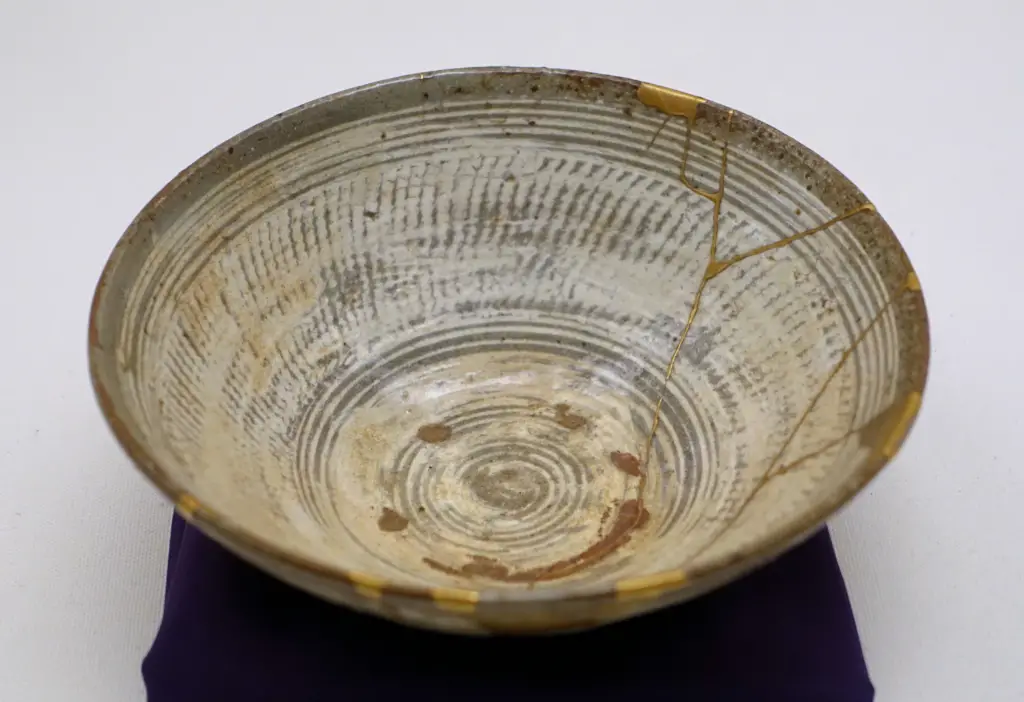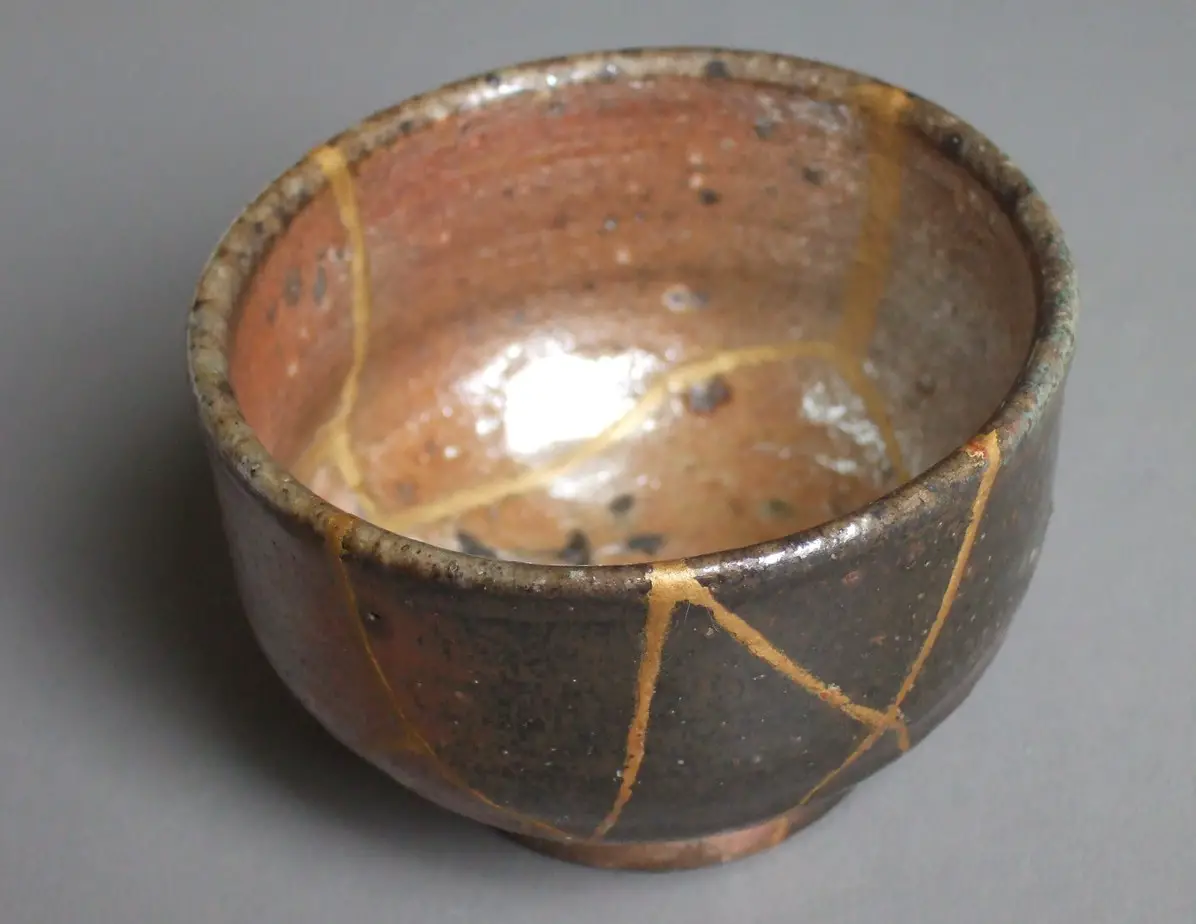When it comes to repairing and joining pottery together, some people want to use something different. There are some that want to join pottery with an adhesive, but there are some that want to use a more decorative means to help fix their pottery. Kintsugi is a Japanese form of joining, and it’s quite old, centuries actually, and it can fix pottery that’s broken with a specific lacquer, and it’s even dusted with certain colors, including the following:
-
Gold
-
Platinum
-
Silver
The little pieces of these colors show through in the ware that they’ve been used on, and it gives a beautiful and unique appearance to this.
This is a method of repairing that actually focuses on showing off the breaks and fractures that are in the piece, rather than trying to completely hide them. It makes pieces that are repaired even prettier, and it’s why Kintsugi: repairing pottery with gold is a form of bringing pottery to life with an age-old technique.
So why do this? And how do you do this? Well, read on to find out.
A Bit of History

Kintsugi is pretty old, dating all the way back to the 1400s in Japan. It actually comes from a legend itself, where the craft began when the shogun at the time Ashikaga Yoshimasa had a tea bowl that was broken and sent to China in order to be repaired. However, when it was brought back, he soon learned that it was mended with just metal staples, which rendered it pretty useless. However, he didn’t just leave it at that but instead used an alternative to repair this, which was how it was born.
Now, the entire practice itself was actually born from various philosophical ideas, mostly the practice of wabi-sabi. This is a practice that focuses on beauty in flawed imperfections. That’s because, sometimes, when there are flaws, it can showcase the beauty in different ways, such as:
-
It can make the piece look more beautiful
-
It creates an interesting and intricate design and gives a sort of uniqueness that other pieces can’t compare to
From this, the repair method came about from the feeling that the Japanese share called mottanai, which is essentially showcasing regret when something is wasted, and something called mushin, which is the acceptance of the change. The practice focuses on not wasting anything, and instead, changing it, and accepting change so it looks even better.
Methods of Doing this
When it comes to doing this, you’ve got a few ways to go about this. There are three different styles that are currently used, and they are as follows:
-
Crack
-
Joint-call
-
Piece Method
For all of these, you have different ways of going about doing this, and most of the time, it involves the same adhesive, but different methods when it comes to doing this.

For example, when you use the crack approaches, it most of the time involves using minimal amounts of this lacquer, and most of the time, it creates some small cracks that are flaked with gold in there.
In contrast, when you use the piecing method, the fragments have a full gold epoxy to them and are much more different. This is good if you want dominant pieces of gold in your pottery itself.
Then, there is the joint-call method, which in essence puts pieces from different wares, and it, in essence, creates a very unique product and one that’s differently shaped.
\Now, with the joint call, you’ll want to make sure the pieces fit relatively together. You may notice in this that it’s a bit different, because of the following:
- It can be hard to put these together
- It can sometimes create more of a jagged surface level It can occasionally be harder to find the right pieces that fit
It’s ultimately up to you, and it does create a beautiful product that you can enjoy, so definitely consider either of these three methods.
The piecing method is something many also like if you want just one giant piece of gold within the pottery. It involves a lot more gold than the rest, but it does create a beautiful contrast in the pieces.
Today, you can actually buy a lot of this pottery in modern stores, and you can get your own. With Kintsugi today, you’ll also notice that it’s not used in merely just earthenware. Rather, it actually is something that is used in different types of pottery, even majolica, and with the essence of gold attached to it, it definitely does have a beauty to it.
If you’re an avid craftsperson, this is ultimately something for you. It’s something that you can purchase relatively easily, and some people like to either buy the pieces restored or even just try out a kit themselves. You can use different types of brushes and such to choose from, and it’s ultimately a piece that you can create on your own.
Options to Choose From
There are different art ways to fix this. In fact, you can determine what colors you want as well, and even different ways within this. Here are a few types:
-
Makienaoshi style
-
Obituary style
-
Different colors Used
We will go over each of these in this section.
Now, the main type that people decide to choose from, or even the one that you may want to try, is maakienaoshi style. This is where the gold, in essence, replaces the section that’s lost, and it has a texture of design that helps to complement the pattern here. This is usually done if you’re missing a piece section, and you don’t have any way of putting it together. Ultimately, it is up to you to figure out what you want to do.

When it comes to adding different elements to it, lots of people like the yobitsugi style, where different parts from a vessel that’s completely unrelated are glued onto the missing area, and from here, it helps to restore it. You can use different elements, including the following:
-
Gemstones
-
Different parts from other pieces
-
Other materials that will complement this, including metals
With this type of art, there are ultimately many different ways to go about creating this, and you need to just figure out for yourself what you want from this as well.
When it comes to the type of material you want to use when you’re making this, it’s ultimately up to you. It’s important to look at the design, and figure out what will complement it the best. For example, if you want to create a staggering difference in color, you can use gold. If you want something that complements the piece well, try using silver. It’s up to you what you decide to use, and it’s what really makes this type of pottery so unique. It’s got a lot of versatility, and some people even like incorporating both the gold or silver epoxy and some of the other elements into this. You can do a lot, and it creates a beautifully restored piece that others can enjoy and one that will ultimately look good as well.
Why do This?
What is the point of doing this? Why spend your time trying to repair elements that shouldn’t be repaired period? Well, let’s take a moment to talk about why bother doing this:
-
It can restore your favorite pottery piece like it’s new
-
There are some epoxies that make it safe to use for consumption, so you can use this again
-
It can make the piece beautiful and unique
-
It can be used to restore a favorite piece
-
It’s something that will bring beauty back into a piece, and maybe even revivify it
-
It’s an art style, and sometimes, art styles take a bit of a risk
-
It’s ultimately a means to help bring life to a piece that was already about to lose it
For many, it’s hard to let go, and sometimes, the beauty in broken pieces is felt. Art is something that can sometimes not make sense, to put it simply. Imperfections are appealing. That’s a big part of life.
Have you ever seen modern art? Where do they have a piece that’s often just a lot of different elements put together? You may not understand why people like it, but there are people out there who find beauty in all of this. Understanding that some find appeal in various imperfections is a huge part of life.
Plus, there is some appeal to using a bolder color with this, and it can be used to create a bold and beautiful texture to it. If you got a piece that you loved, but maybe a chip came off on it, you want to keep the piece as a memento, and from this, you’ll be able to create and restore the piece to its former glory. Don’t be afraid to do this, instead, you’ll be able to create and make a beautiful and whole once again a piece, and the best part is that you have a personal touch to this
.
Now, you can seek out pottery studios that do this, or if you’re an adventurous type, there are kits We will discuss here how you can restore the pottery on your own as a DIY measure, but definitely do consider reading up a little bit on this before you continue.
How to Do this?
So how do you do this? Well, we will tell you what you need before you begin, and the process here in this section.
The materials needed:
-
Epoxy putty
-
a soft paintbrush
-
wooden sticks
-
Epoxy putty
-
Gold powder
-
Gloves to protect your hands
Now, these are all available in kits too, so if you don’t want to go out and try to find all of this, consider investing in a kit, since it’s all there for you.
Now epoxy can be a bit toxic as well, so make sure you’ve got a mask here too. But, if you’re someone who is used to crafting, the first thing that you will notice here, is that this is super messy. It ends up getting everywhere, since it is a powder and a resin, and it’s almost like you’re dealing with glitter at this point. If you’re okay with getting a little messy, you can do this without the gloves to help create a more exact creation, but the gloves usually help to keep it mostly mess-free. But, it’s ideal that you don’t do this on any surface you’re not ready to get messy. Also, be patient with this, and take it slow, since it will prevent messes from happening as well.
Now that you probably have a good setup and the materials, here is how you do this.
-
Take the resin, and mix this with the gold powder, or whatever color powder you have
-
Take the mixture and put it on one side where the crack is, and from there, leave it for about a minute or two in order to let it set slightly
-
From here, push it together, and from there, leave it to hold for a couple of minutes. You should make sure that you keep your hands like this for a long time, because if you let go early, you’re going to get this everywhere, and this is how the aspect of this gets really messy. The biggest thing to do here is to sit, wait for it to set, and don’t rush this
-
Also, if you notice that the resin is almost flooding through, don’t be scared. You want it to show, unlike when you’re repairing broken pottery with normal pottery repair kits
-
From here, you want to take the gold powder, and from there with the brush, you want to put more of the gold powder onto there. You want to make sure that this is dry, but sticky as well so that the gold powder gets onto this surface pretty well
-
Now, if you notice that there are holds and spaces in the pottery, from here, take the epoxy putty and put it on the area. The biggest thing to remember with this is that this stuff dries super fast, so you need to work quickly. From there, you want to when it’s fully dried put a bit of the resin mixed together with the gold onto there, and then use the brush and paint it onto the area to give it more gold
And that’s it! Essentially, you want to use your own discretion on this. Some people are cool with working a bit fast and getting it everywhere. Some are cool with taking their time and being really slow with it. You can use different colors as well, such as may be silver in one area, and gold in another. The possibilities of this are endless.
Now, if you do end up getting resin on the piece, you’ll probably notice that it’s hard to get off. This can get everywhere if you’re not careful, and then you’ve got a gold-covered piece of pottery. The best thing to do is to use some Cliff to get it off, but if you have pieces that are harder to remove, you can use a craft knife. Toothpicks are pretty good here too.
The toothpicks are also good because they can help to hold the pieces together while the resin sets. A box with sand in it is also a good idea as well. It’s pretty cool to try, and if you really want to get into this, you can try using different pieces of pottery that maybe have a crack or chip in them. It’s such a unique design, and it’s quite fun to create too.
A nice thing about this is that you can get the gold effect metal powder instead of pure gold leaf. There is a bit of a difference when it comes to the price of this. If you’re just starting out, you may already be using this, but if you’re looking to expand into different realms of this, consider trying the gold effect powder. Often, there isn’t much of a visual difference. The mix of these metals in a compound actually also makes it resistant to any erosion and scratches, and it’s actually safer, and much more resilient than traditional gold application, so keep that in mind when you’re looking for different ways to do this.
That’s what the process entails, and while it can be complicated to do, it’s ultimately very rewarding.
Any Care Tips?

When it comes to caring for these pieces, there are a few different types of elements to consider. Here are a couple of care tips when using this:
-
To keep the quality intact, you should make sure that you don’t use this for liquids. They can typically be food and liquid-safe, but if you want to keep them around a lot, don’t do this
-
Don’t use this with any temperature or food that’s above 150 degrees. This will cause it to melt
-
Ideally, keep these for display only. You can use this if you want to for consumption, but it’s not ideal
-
If you do use this for consumption, make sure the materials that you use are non-toxic
-
If you do need to clean these, you should use a soft cloth that’s damp, and you should make sure that you apply this in a gentle manner, without any scrubbing done
That’s really all there is to it, and if you take care of it, they last a long time.
Imitations?
If you’re looking to invest in this, you want to watch out for the fakes. Here are a couple of imitations that you should watch out for. If you’re making your own, don’t really try to focus on this because it may not be perfect, but you should definitely watch for this if you’re going to be investing.
-
The use of gold paint just brushed over the seam of this. This is usually very messy, and it often doesn’t really look good. The gold color is mixed with bonding glue. This is usually cheap, and if you’re doing your own repairs that’s fine, but it’s typically not a resin, but instead a cheap super glue.
-
The gold effect was painted on without the item actually not being broken. This is more of an artistic point, and while it does look cool with gold color or a glaze, this isn’t traditional Kintsugi pottery, and it’s a cheap imitation. If you want to do this for the sake of art, then go for it, but just remember that it’s not legitimate, but instead a fake.
Typically, the original process was a lacquer art, and it was used with different tree saps, and then covered with a gold powder before it was burnished. however, nowadays there are different ways to do this, and ultimately, it’s not wrong to do it in the modern style. However, if you’re purchasing legitimate Kintsugi pottery, you should be careful of the different types of fakes that are out there, and ultimately watch for the different types of factors that make it not as legitimate. Again though, if this is for you, there’s nothing wrong with doing a kit.
This is a unique form of pottery that many people do enjoy. If you’ve ever been curious about how to do this, then this post showed you how. You don’t have to always forsake your old pieces of pottery, but instead, try something new and innovative. It can make a huge difference in the future of the pottery that you’ve created, and ultimately, it can also help you create and beautify the pieces that you have, and it will make it even better and prettier than ever before, and give a unique restoration to it as well for yourself, and for your pottery pieces as well.







